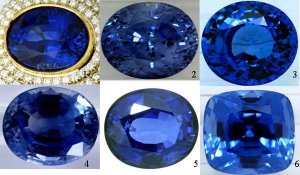- Joined
- Nov 16, 2003
- Messages
- 645
Politely,
Fact is, as you say, its a jungle out there. In every transaction we make the potential of over paying or getting cheated in quality exists. The plumber, the butcher, the heart surgeon. When we buy drugs, cars, and on and on. Boy would I like to see a system for grading plumbers. Point is you gotta trust someone and your sucess in making that decision conditions a lot in life.
Buying a gem is like buying a painting. Unless you go to the sales at the Holiday Inn and buy by the square foot you hardly have a benchmark. Why is Van Gogh''s Sunflowers worth more than Elvis on velvet? Because the willing buyer paid the willing seller.
I don''t agree that the expectation of fraud is higher in the jewelry industry than elsewhere. That seems to be the suppressed premise throughout your analysis. Remember the 20/20 story? I know for a fact that they went to a number of jewelers who did not switch stones but that wouldn''t have made a story. The level of ignorance, among jewelers, is fairly high regarding anything that isn''t a diamond but, jewelers as a group are no more honest or dishonest than anyone else.
Fact is, as you say, its a jungle out there. In every transaction we make the potential of over paying or getting cheated in quality exists. The plumber, the butcher, the heart surgeon. When we buy drugs, cars, and on and on. Boy would I like to see a system for grading plumbers. Point is you gotta trust someone and your sucess in making that decision conditions a lot in life.
Buying a gem is like buying a painting. Unless you go to the sales at the Holiday Inn and buy by the square foot you hardly have a benchmark. Why is Van Gogh''s Sunflowers worth more than Elvis on velvet? Because the willing buyer paid the willing seller.
I don''t agree that the expectation of fraud is higher in the jewelry industry than elsewhere. That seems to be the suppressed premise throughout your analysis. Remember the 20/20 story? I know for a fact that they went to a number of jewelers who did not switch stones but that wouldn''t have made a story. The level of ignorance, among jewelers, is fairly high regarding anything that isn''t a diamond but, jewelers as a group are no more honest or dishonest than anyone else.





300x240.png)